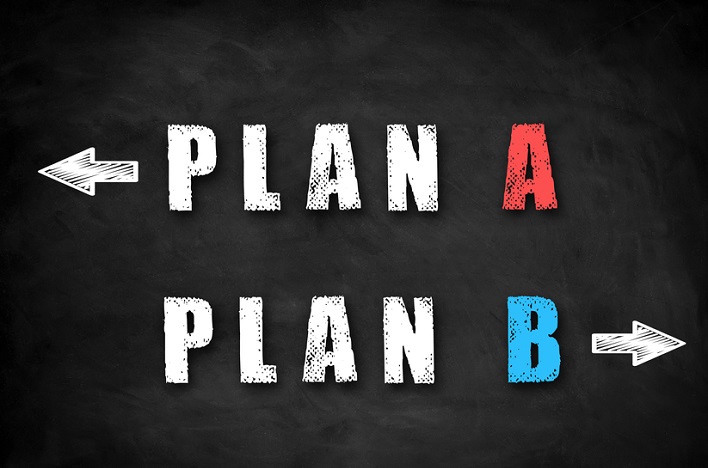“What happened?” I asked. Carol, the company owner, shrugged. “The deal didn’t work out.” She had been in negotiations for six months to merge her business with a larger company. I persisted. “So, what’s your Plan B?” She shook her head. “There is no Plan B.”
Like many business owners, Carol was understandably disappointed when her Plan A didn’t unfold as envisioned. Unlike her answer to my question, there is always a Plan B—if you prepare for it in advance.
The Plan A Mind-Set
Having a Plan B doesn’t necessarily mean that you aren’t fully committed to Plan A. Relentless focus on Plan A as your only option can derail and demotivate you if it fails to produce your intended outcomes. You begin thinking that Plan A is only path to success, when in fact there can be several ways to achieve the results you want. The following questions can help you to think beyond a single option:
- Do I really have a plan, or do I have a desired outcome?
- Do I believe that I can only achieve the outcome in one specific way?
- Are there other approaches I can implement that can achieve my results?
- Have I made allowances for the unexpected?
Why You Need Plan B
Plan A is always framed as an opportunity. Developing a Plan B allows you to think through the risks that could arise, which makes your opportunity more likely to succeed and helps you to respond more effectively to unexpected developments when they surface. The key is to acknowledge and address the potential challenges at the same time that you are planning for the opportunity.
How to Strengthen Plan A and Develop Plan B
Give yourself permission to go big and also consider the downsides by incorporating a pre-mortem into your planning. Developed by James Macanufo, a pre-mortem is an effective way to formulate Plan A and identify elements of Plan B. Here’s how:
- Fast-forward your idea, project or initiative into the future (next year, end of next quarter, next month), and imagine that it failed.
- What went wrong? Make a list of all of the barriers to success that could occur.
- For each barrier or challenge you identify, define the actions you can take or processes you can implement that can minimize their impact on your intended outcome.
While having a Plan A is a must-have for success, most businesses also need a Plan B. According to James Yorke, who co-defined chaos systems in mathematics, “The most successful people are those who are good at Plan B.” That’s solid endorsement for a back-up plan, especially from an expert in chaos.

